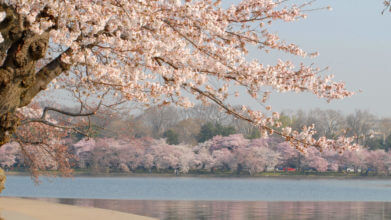Union Station
50 Massachusetts Ave NE, Washington, DC 20002
Tickets Sold at this Stop
Massachusetts Ave. and Columbus Circle NE. Enter Columbus Circle, make first left, follow lane C. Stop is in front of Union Station just east of the main crosswalk.
National Japanese American Memorial
400 New Jersey Ave NW
New Jersey Avenue NW between E and D streets NW. In front the Hyatt Regency between the entrance and exit of the circular driveway.
U.S. Capitol
1st St NW, Washington, DC 20016
First Street and Pennsylvania Avenue, NW. Stop is at the Peace Monument Circle at Pennsylvania and 1st Street, NW.
Smithsonian Air and Space Museum
200-250 6th St SW, Washington, DC 20024
Sixth Street and Independence Avenue, SW. Stop is on the south side of the building at 6th Street and Independence Avenue, SW.
The Wharf - Boarding for Water Taxi Boat Cruise
Maine Ave SW at 9th street SW
900 Maine Ave SW. Between the intersection and the Metro bus stop.
International Spy Museum
700 L'Enfant Plaza
700 L'Enfant Plaza
Washington Monument
1050 Independence Ave. SW
Corner of 12th and Independence Ave, in front of the Smithsonian Freer Gallery of Art.
Jefferson Memorial
East Basin Dr. & Ohio Dr. SW.
Stop is at the intersection of East Basin Drive and Ohio Drive, SW, across from the George Mason Memorial.
FDR Memorial/ MLK Jr. Memorial
1695 West Basin Dr SW, Washington, DC 20418
West Basin Dr. and Ohio Dr. SW. North on West Basin Dr. - Stop is just after the taxi stand & bus loading and unloading sign.
Lincoln Memorial
11 Daniel French Dr SW, Washington, DC 20245
Daniel French Dr. & Independence Ave. SW. North on Daniel French Dr. into Lincoln complex. Stop is next to the Concession Stand. Transfer for Arlington National Cemetery Shuttle.
National Museum of American History
1300 Constitution Ave NW, Washington, DC 20560
14th & Constitution Ave. NW. East on Constitution Ave., stop is just before first driveway entrance by the fire hydrant.
National Portrait Gallery/African Art Museum
F Street NW at 8th Street
At the intersection between the two crosswalks in front of the steps of the Donald Reynolds Center for American Art and Portraiture
Washington Welcome Center
1001 E St NW, Washington, DC 20004
Tickets Sold at this Stop
At the intersection of 10th and E Streets, NW. Across the street from Ford's Theatre and the Peterson House.
The White House
1475 Pennsylvania Ave. NW , Washington, DC 20004
15th and Pennsylvania Avenue NW. Next to the green fire hydrant, in front of the Willard Hotel.
National Archives
800 Pennsylvania Ave NW, Washington, DC 20004
9th Street and Pennsylvania Ave. NW. East on Pennsylvania Ave. Stop is in front of the Research Center entrance. Across from the Navy Memorial.
Arlington National Cemetery
1 Memorial Ave. , Ft. Myer, VA 22211. Arlington Welcome Center loading zone.
Eisenhower and Arlington Cemetery Circle; under the pavilion just outside of the rear doors of the Arlington Visitor's Center. Transfer for tour of the Cemetery (must have separate ticket).
John F. Kennedy Gravesite
Grant Drive, west of Sheridan
On Grant Drive just west of Sheridan's intersection near the shrubbery at the benches.
Coast Guard Memorial
Jessup and Dewey
On Jessup in between the Coast Guard Memorial and the lone bench
Pershing Gravesite
Clayton at Grant
On Clayton at the intersection at Grant near the stop sign.
Tomb of the Unknown Soldier
Porter and Memorial Drive
At the entrance of the Amphitheater about 50 feet to the left of the stairs
Arlington House
Sherman between Sheridan and Lincoln
Out the rear of Arlington House along the street at the row of benches
Iwo Jima Memorial
Ord and Wetzel Drive
Across the street from the gate near the walkway at the “no vehicles allowed” sign
Union Station
50 Massachusetts Ave NE, Washington, DC 20002Tickets Sold at this Stop
Massachusetts Ave. and Columbus Circle NE. Enter Columbus Circle, make first left, follow lane C. Stop is in front of Union Station just east of the main crosswalk.
National Japanese American Memorial
400 New Jersey Ave NWNew Jersey Avenue NW between E and D streets NW. In front the Hyatt Regency between the entrance and exit of the circular driveway.
U.S. Capitol
1st St NW, Washington, DC 20016First Street and Pennsylvania Avenue, NW. Stop is at the Peace Monument Circle at Pennsylvania and 1st Street, NW.
Smithsonian Air and Space Museum
200-250 6th St SW, Washington, DC 20024Sixth Street and Independence Avenue, SW. Stop is on the south side of the building at 6th Street and Independence Avenue, SW.
The Wharf - Boarding for Water Taxi Boat Cruise
Maine Ave SW at 9th street SW900 Maine Ave SW. Between the intersection and the Metro bus stop.
Washington Monument
1050 Independence Ave. SWCorner of 12th and Independence Ave, in front of the Smithsonian Freer Gallery of Art.
Jefferson Memorial
East Basin Dr. & Ohio Dr. SW.Stop is at the intersection of East Basin Drive and Ohio Drive, SW, across from the George Mason Memorial.
FDR Memorial/ MLK Jr. Memorial
1695 West Basin Dr SW, Washington, DC 20418West Basin Dr. and Ohio Dr. SW. North on West Basin Dr. - Stop is just after the taxi stand & bus loading and unloading sign.
Lincoln Memorial
11 Daniel French Dr SW, Washington, DC 20245Daniel French Dr. & Independence Ave. SW. North on Daniel French Dr. into Lincoln complex. Stop is next to the Concession Stand. Transfer for Arlington National Cemetery Shuttle.
National Museum of American History
1300 Constitution Ave NW, Washington, DC 2056014th & Constitution Ave. NW. East on Constitution Ave., stop is just before first driveway entrance by the fire hydrant.
National Portrait Gallery/African Art Museum
F Street NW at 8th StreetAt the intersection between the two crosswalks in front of the steps of the Donald Reynolds Center for American Art and Portraiture
Washington Welcome Center
1001 E St NW, Washington, DC 20004Tickets Sold at this Stop
At the intersection of 10th and E Streets, NW. Across the street from Ford's Theatre and the Peterson House.
The White House
1475 Pennsylvania Ave. NW , Washington, DC 2000415th and Pennsylvania Avenue NW. Next to the green fire hydrant, in front of the Willard Hotel.
National Archives
800 Pennsylvania Ave NW, Washington, DC 200049th Street and Pennsylvania Ave. NW. East on Pennsylvania Ave. Stop is in front of the Research Center entrance. Across from the Navy Memorial.
Arlington National Cemetery
1 Memorial Ave. , Ft. Myer, VA 22211. Arlington Welcome Center loading zone.Eisenhower and Arlington Cemetery Circle; under the pavilion just outside of the rear doors of the Arlington Visitor's Center. Transfer for tour of the Cemetery (must have separate ticket).
John F. Kennedy Gravesite
Grant Drive, west of SheridanOn Grant Drive just west of Sheridan's intersection near the shrubbery at the benches.
Coast Guard Memorial
Jessup and DeweyOn Jessup in between the Coast Guard Memorial and the lone bench
Pershing Gravesite
Clayton at GrantOn Clayton at the intersection at Grant near the stop sign.
Tomb of the Unknown Soldier
Porter and Memorial DriveAt the entrance of the Amphitheater about 50 feet to the left of the stairs
Arlington House
Sherman between Sheridan and LincolnOut the rear of Arlington House along the street at the row of benches
Iwo Jima Memorial
Ord and Wetzel DriveAcross the street from the gate near the walkway at the “no vehicles allowed” sign
- National Mall, Downtown & Waterfront Loop

- Arlington National Cemetery Loop

- Arlington National Cemetery Shuttle

- Orange Loop Stops

- Parking

- Arlington National Cemetery Stops

Tour at your own pace! Old Town Trolley Tours’ On and off Privileges make it easy to explore these top U.S. travel destinations! Hop off at your favorite stops – for lunch, shopping or to experience an attraction – and then continue your sightseeing tour. We call it Transportainment®: a delightful style of entertainment and transportation that sets our sightseeing tours apart.
All Aboard Old Town Trolley Tours!
Union Station
Attractions to explore near this stop
Share with your friends!
Attractions to explore near this stop
Smithsonian National Postal Museum
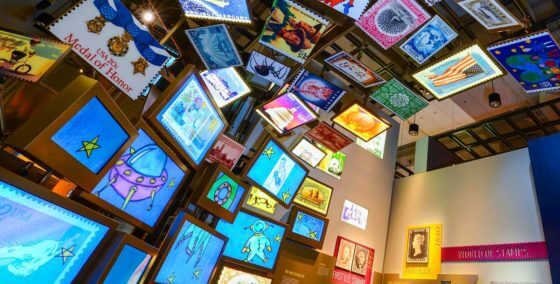
Journey back to the days of the Pony Express and see first-hand how the mail was delivered in colonial America, through times of war and into the present day. At the Smithsonian National Postal Museum, visitors learn about the amazing history of the American postal service and how it evolved to become what it is today. Located on the lower level of the old Post Office Building just next door to Union Station, the building was constructed in 1914 and served as the Washington DC post office until 1986.
-
 Shopping
Shopping -
 Restrooms
Restrooms
U.S. Capitol
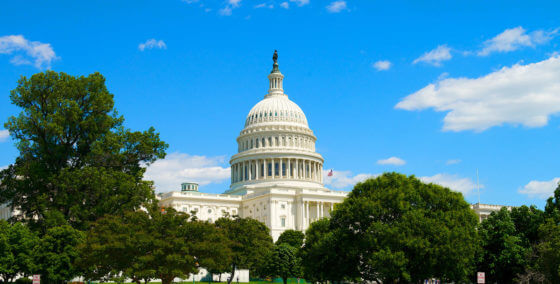
A grand symbol of the United States Government, the Capitol Building on Capitol Hill is recognized across the world as one of our country’s most prominent icons of Democracy. The striking white dome acts as a focal point to the building which welcomes thousands of visitors every year. Both a working legislative building and a national monument, guided tours are offered all day long and provide an inside look into how our United States government works.
-
 Shopping
Shopping -
 Dining
Dining -
 Restrooms
Restrooms
U.S. Supreme Court
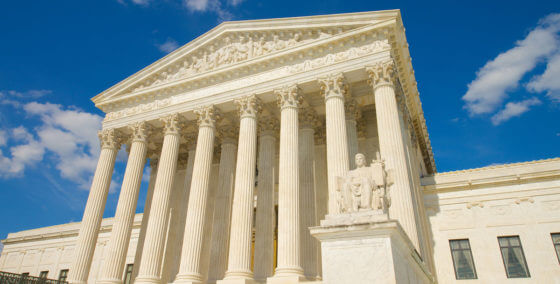
Upon arrival at the Supreme Court, visitors are often struck by the imposing marble building. Architecturally magnificent, the neoclassical structure was built in 1935 to become the permanent home to the Supreme Court. Walking along the hallway towards the Courtroom, guests are greeted by busts of all the former Chief Justices. The Supreme Court is the highest judiciary authority in the United States and hears about 100 cases each year, although more than 7,000 are submitted before them. Visitors can tour the Supreme Court building, hear lectures on the history of the court and how it works, sit in on sessions on specified days and times and view various exhibits throughout the year.
-
 Shopping
Shopping -
 Dining
Dining -
 Restrooms
Restrooms
Library of Congress

The Library of Congress is unlike any other library in the world. The world’s largest library, it is home to more than 100 million books, maps, recordings, manuscripts, films and photos including items from Thomas Jefferson’s personal collection. Former President Jefferson stepped in to help the new Library after the War of 1812. In 1814, the British burned the small congressional library’s north wing. Jefferson offered to sell his extensive library of 6,487 books to “recommence” its own library.
-
 Shopping
Shopping -
 Restrooms
Restrooms
 Union Station
Union Station
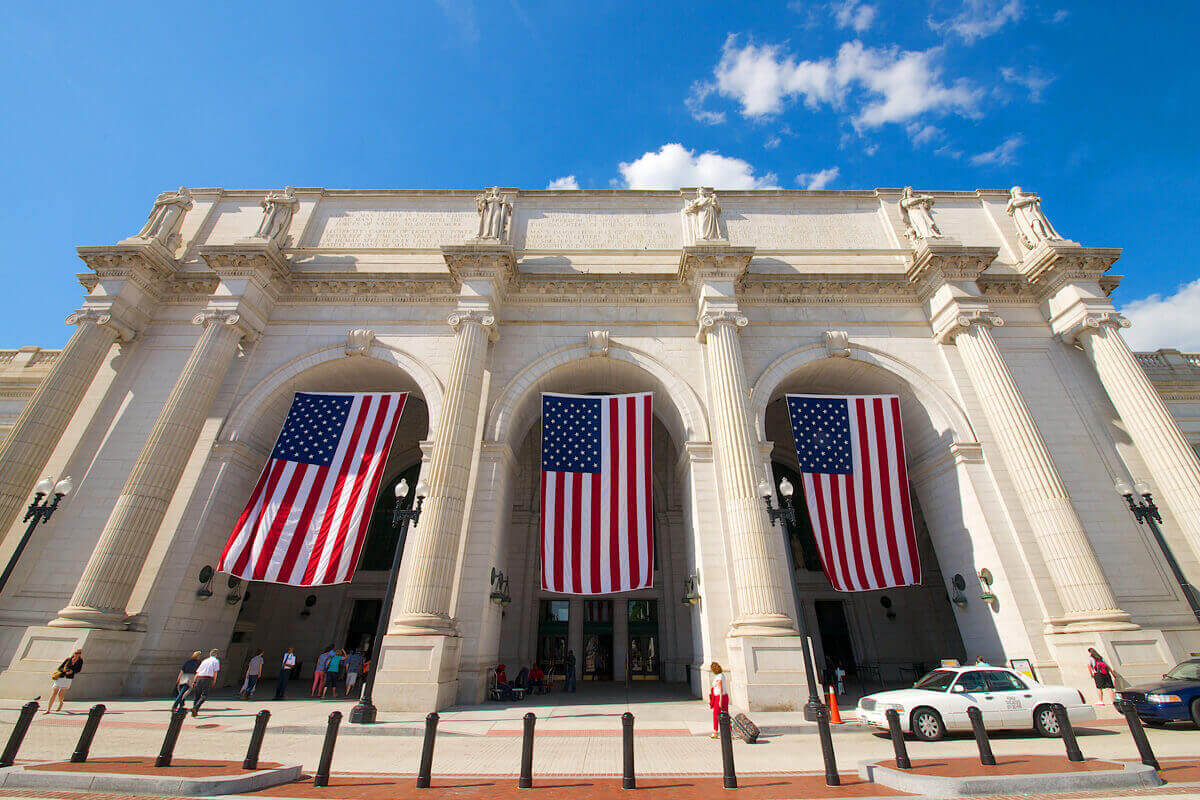
Welcome to Washington DC! The spectacular Union Station was originally designed to be the gateway to the city and since it opened over 90 years ago, has become the most visited site in DC. Its unique architecture makes it popular for photos. Locals, tourists and even presidents make it a point to visit this magnificent historic mall and train station.
-
 Shopping
Shopping -
 Dining
Dining -
 Restrooms
Restrooms
National Japanese American Memorial
Attractions to explore near this stop
Share with your friends!
Attractions to explore near this stop
National Law Enforcement Museum

Visitors will explore the history and many facets of American law enforcement in an experience you won’t find anywhere else!
-
 Admissions
Admissions -
 Shopping
Shopping -
 Restrooms
Restrooms
Smithsonian National Postal Museum

Journey back to the days of the Pony Express and see first-hand how the mail was delivered in colonial America, through times of war and into the present day. At the Smithsonian National Postal Museum, visitors learn about the amazing history of the American postal service and how it evolved to become what it is today. Located on the lower level of the old Post Office Building just next door to Union Station, the building was constructed in 1914 and served as the Washington DC post office until 1986.
-
 Shopping
Shopping -
 Restrooms
Restrooms
Union Station

Welcome to Washington DC! The spectacular Union Station was originally designed to be the gateway to the city and since it opened over 90 years ago, has become the most visited site in DC. Its unique architecture makes it popular for photos. Locals, tourists and even presidents make it a point to visit this magnificent historic mall and train station.
-
 Shopping
Shopping -
 Dining
Dining -
 Restrooms
Restrooms
 National Japanese American Memorial
National Japanese American Memorial

Located adjacent to the U.S. Capitol Building, this beautifully landscaped memorial was built to commemorate the civil injustices endured by the Japanese-American community during the Second World War as well as to honor those who served and fought with dignity for their adoptive country. The spiral design features dimensional granite that engulfs the space upon which is inscribed the names of all Japanese-Americans that died during World War II. There is also a reflection pool and several sculptures which further evoke the powerful emotions befitting of its subject.
U.S. Capitol
Attractions to explore near this stop
Share with your friends!
Attractions to explore near this stop
U.S. Supreme Court

Upon arrival at the Supreme Court, visitors are often struck by the imposing marble building. Architecturally magnificent, the neoclassical structure was built in 1935 to become the permanent home to the Supreme Court. Walking along the hallway towards the Courtroom, guests are greeted by busts of all the former Chief Justices. The Supreme Court is the highest judiciary authority in the United States and hears about 100 cases each year, although more than 7,000 are submitted before them. Visitors can tour the Supreme Court building, hear lectures on the history of the court and how it works, sit in on sessions on specified days and times and view various exhibits throughout the year.
-
 Shopping
Shopping -
 Dining
Dining -
 Restrooms
Restrooms
Library of Congress

The Library of Congress is unlike any other library in the world. The world’s largest library, it is home to more than 100 million books, maps, recordings, manuscripts, films and photos including items from Thomas Jefferson’s personal collection. Former President Jefferson stepped in to help the new Library after the War of 1812. In 1814, the British burned the small congressional library’s north wing. Jefferson offered to sell his extensive library of 6,487 books to “recommence” its own library.
-
 Shopping
Shopping -
 Restrooms
Restrooms
U.S. Botanic Garden

No matter what time of year it is, the lush greenery and gorgeous plants are always thriving at the United States Botanic Garden. Located just next door to the Museum of the American Indian at the foot of the Capitol, the Botanic Garden is an oasis of beautiful plant life and flowers and home to 4,000 living species. The conservatory houses exhibits that focus on the importance of plants to people and on the ecology and evolution of plants.
 U.S. Capitol
U.S. Capitol
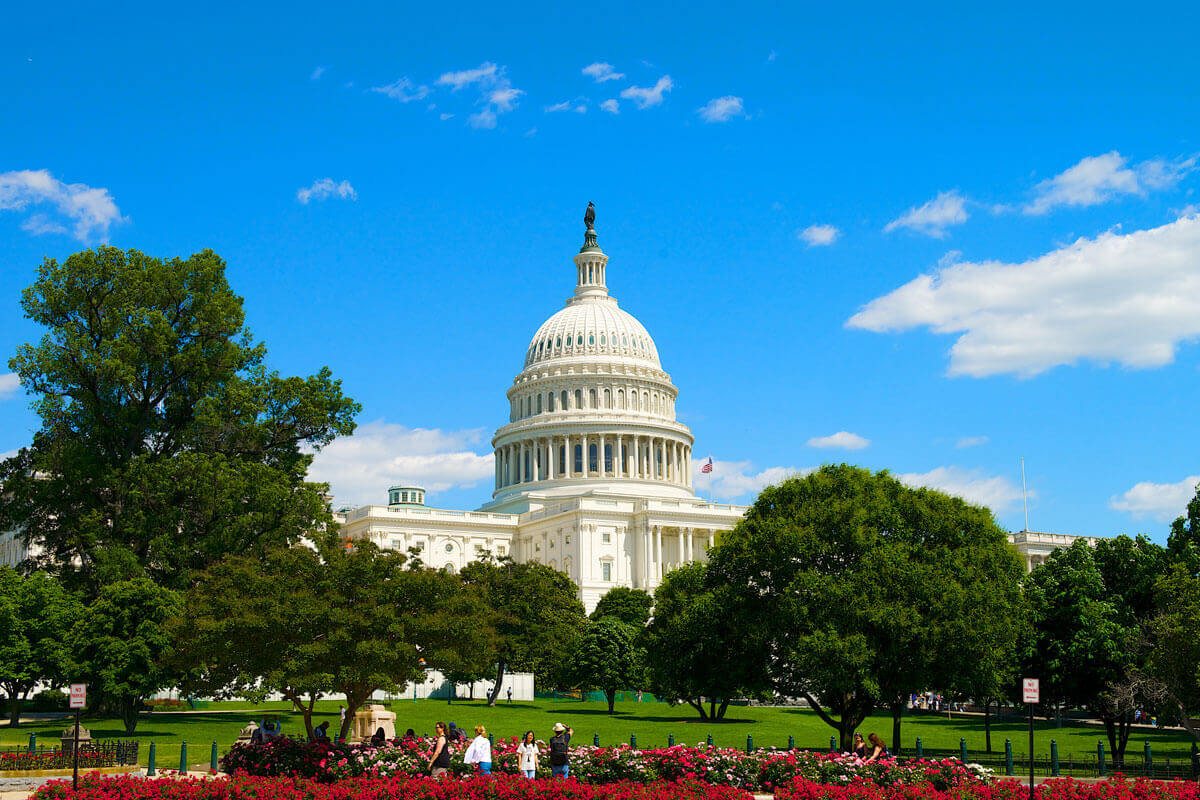
A grand symbol of the United States Government, the Capitol Building on Capitol Hill is recognized across the world as one of our country’s most prominent icons of Democracy. The striking white dome acts as a focal point to the building which welcomes thousands of visitors every year. Both a working legislative building and a national monument, guided tours are offered all day long and provide an inside look into how our United States government works.
-
 Shopping
Shopping -
 Dining
Dining -
 Restrooms
Restrooms
Smithsonian National Air and Space Museum
Attractions to explore near this stop
Share with your friends!
Attractions to explore near this stop
Museum of the American Indian
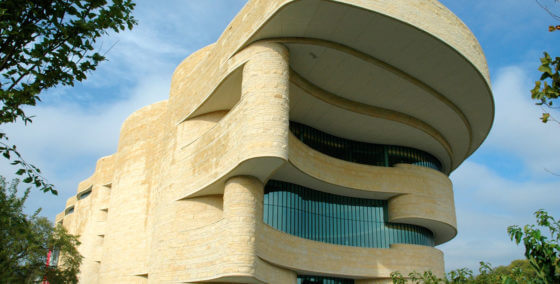
The Museum of the American Indian is the only museum solely dedicated to the history, study and preservation of the American Indians. You’ll be instantly captivated by its masterful architecture. The curved limestone building appears to be a natural rock formation facing towards the sun and is surrounded by acres of authentic crops of the American Indian. Its very design stands out among the many granite and marble neoclassical structures in the National Mall. Once inside, you’ll be treated to an up-close look at the life, languages, history, art and traditions of the Native Americans.
-
 Shopping
Shopping -
 Dining
Dining -
 Entertainment
Entertainment -
 Restrooms
Restrooms
Hirshhorn Gallery & Sculpture Garden

The founder of the Hirschhorn Gallery and Sculpture Garden, Joseph Hirschhorn left an impressive legacy of art and inspiration to the American People. He had an immense passion for art. So much so that at one time he had more than 6,000 pieces in his collection housed at several private locations. It was Hirschhorn’s adoration for the arts that inspired a new museum of art in Washington DC in the late 1960’s. The Hirschhorn Gallery and Sculpture Garden opened its doors in 1974, featuring Joseph Hirschhorn’s personal collection of paintings and sculpture, which he generously donated so that all of the American people could enjoy it as much as he did.
-
 Shopping
Shopping -
 Dining
Dining -
 Restrooms
Restrooms
 Smithsonian National Air and Space Museum
Smithsonian National Air and Space Museum
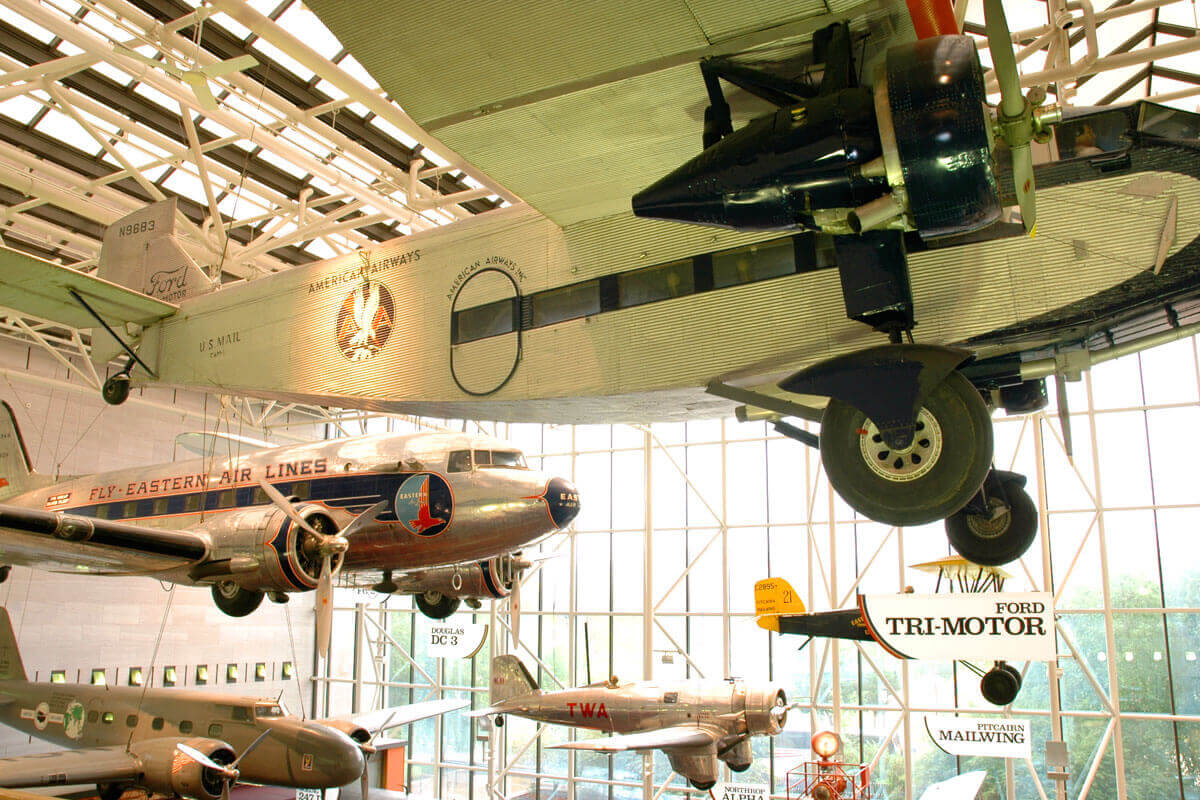
One can only imagine the exhilaration that Neil Armstrong felt as he took the very first steps on the moon in 1969 or the incredible thrill that the Wright brothers experienced as they took that first flight in 1903. At the Smithsonian Air and Space Museum, you can get an idea of how they felt when you see first-hand the original Wright 1903 Flyer and the Apollo 11 Command Module, which carried astronauts Neil Armstrong, Michael Collins, and Buzz Aldrin on their mission to the moon. These historic aircraft and spacecraft are part of the museum’s collection of more than 30,000 artifacts.
-
 Shopping
Shopping -
 Dining
Dining -
 Entertainment
Entertainment -
 Restrooms
Restrooms
The Wharf – Boarding for Water Taxi Boat Cruise
Attractions to explore near this stop
Share with your friends!
 The Wharf – Boarding for Water Taxi Boat Cruise
The Wharf – Boarding for Water Taxi Boat Cruise

With the grand opening of its first phase in 2017, the Wharf District became the realization of a dream of city planners, local government, and city residents. The mile-long southwest waterfront on the banks of the Potomac has since been transformed into the the biggest private development project in the city with a plethora of things to see and do. Currently, the district features 3 hotels, 2 office buildings, 2 multi-family for-rent buildings, 2 condominiums, and a 140,000 square foot live music venue. In addition, there are 12 new public squares and parks to enjoy and 115 shops and restaurants.
-
 Shopping
Shopping -
 Dining
Dining -
 Entertainment
Entertainment
International Spy Museum
Attractions to explore near this stop
Share with your friends!
 International Spy Museum
International Spy Museum

Is there really such a thing as invisible ink? Is someone watching you through a camera in their buttonhole? For answers to these questions and a million other secrets about the fascinating world of spying, stop by the International Spy Museum. Discover the truth and myths about microdots and invisible ink, buttonhole cameras and submarine recording systems. Examine bugs of all sizes and kinds, and ingenious disguise techniques developed by Hollywood for the CIA. Trace the history of 50 years of spy technology, developed by agencies from the OSS to the KGB.
-
 Admissions
Admissions -
 Entertainment
Entertainment -
 Restrooms
Restrooms
Washington Monument
Attractions to explore near this stop
Share with your friends!
Attractions to explore near this stop
Holocaust Memorial Museum

The museum serves as a memorial to the millions of people who were murdered during the Holocaust. Open 10 a.m. to 5:30 p.m. everyday, except Yom Kippur and Christmas Day. Timed passes are distributed on a first–come first–served basis.
-
 Shopping
Shopping -
 Dining
Dining -
 Restrooms
Restrooms
Bureau of Engraving and Printing

See where millions of dollars are printed every day. Discover all of the steps to producing currency from the blank sheet of paper to a crisp bill. As the security printer for the US Government, the Bureau is responsible for the design, printing and engraving for all US currency.
-
 Shopping
Shopping -
 Restrooms
Restrooms
Freer and Sackler Galleries of Art - Smithsonian Castle

The Smithsonian Castle, officially known as the Smithsonian Institution Building, stands as a gateway to the many treasures of the Smithsonian Institution. Located near the National Mall in Washington, DC, this striking red sandstone structure has been a centerpiece of cultural and scientific exploration since its completion in 1855. Designed by architect James Renwick Jr., the Smithsonian Castle blends elements of Gothic Revival with Norman-style architecture, creating a structure that is both timeless and rich in historical significance. Whether you’re a history enthusiast, architecture admirer or simply curious about the Smithsonian’s offerings, this guide will help you explore the castle’s fascinating past and plan a memorable visit.
 Washington Monument
Washington Monument
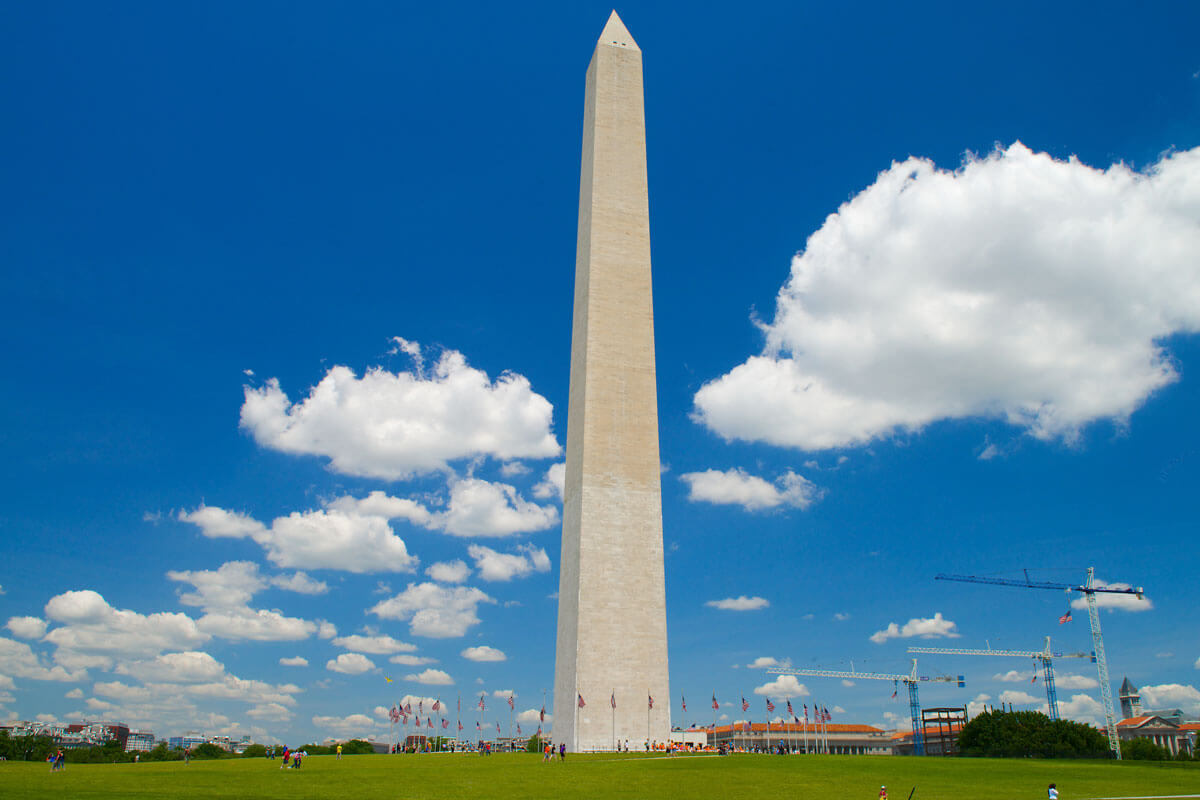
One of the most celebrated and spectacular sights on the National Mall, the Washington Monument, stands as a grand tribute to our nation’s first President, George Washington. The 555 foot obelisk is also one of the oldest and most recognizable memorials in the City. While construction began in 1848, the monument was not completed until 1884 because of financial difficulties during the Civil War.
A Visitor’s Guide to the Jefferson Memorial
Attractions to explore near this stop
Share with your friends!
Attractions to explore near this stop
George Mason Memorial

What many folks don’t know about George Mason, they can learn while visiting his memorial right next to the Jefferson Memorial. Known for his authorship of the Virginia Declaration of Rights, George Mason’s work and beliefs were a major influence into the writing of the United States Bill of Rights. He earned the nickname, the reluctant statesman, after refusing to sign the United States Constitution because it did not abolish slavery.
Tidal Basin

The Tidal Basin is a beautiful part of the National Mall in Washington DC. Bordering monuments and memorials, the Tidal Basin is home to thousands of Cherry Trees that were given as a gift to the United States by Japan. Luring visitors to take a stroll or rent a paddle-boat for a tranquil break from sightseeing, the Tidal Basin is a favorite spot to many tourists throughout the year.
-
 Admissions
Admissions -
 Entertainment
Entertainment
FDR Memorial

The FDR Memorial is located along the Western edge of the Tidal Basin, between the Lincoln and Jefferson Memorials. Built in 1997, the memorial is known for its unique design, its tribute to our 32nd President, Franklin Delano Roosevelt, and for the fact that it tells the story of America during the years of FDR’s Presidency. Four outdoor rooms portray the President’s terms in office, each with different statues and quotes. Beginning with a likeness of him riding in a car during his first inaugural speech and ending with him seated in a wheelchair, the memorial traces his twelve years of office as well as the many changes our country went through during that era.
-
 Restrooms
Restrooms
 A Visitor’s Guide to the Jefferson Memorial
A Visitor’s Guide to the Jefferson Memorial

Tours in Washington, DC, are not complete without a stop at the Jefferson Memorial. A tribute to the third president of the United States, Thomas Jefferson, the memorial stands as a recognized symbol of democracy and independence. As one of the founding fathers of the country and the author of the Declaration of Independence, Jefferson’s significant impact on the shaping of the U.S. government is known throughout the world. Visiting this iconic site offers a unique opportunity to connect with the ideals that have shaped American democracy.
Inside the memorial sits a 19-foot statue of Jefferson surrounded by passages from the Declaration of Independence and other key writings inscribed on the walls. The beautiful white-domed building is completely open to the elements and is situated on the Tidal Basin, framed by blooming cherry blossom trees in the spring. With its messages of hope and freedom, stunning views, and rich history, the Jefferson Memorial is truly a sight to be seen for visitors to Washington, DC.
-
 Restrooms
Restrooms
FDR Memorial
Attractions to explore near this stop
Share with your friends!
Attractions to explore near this stop
A Visitor's Guide to the Jefferson Memorial
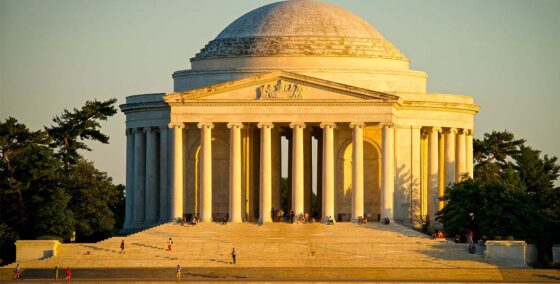
Tours in Washington, DC, are not complete without a stop at the Jefferson Memorial. A tribute to the third president of the United States, Thomas Jefferson, the memorial stands as a recognized symbol of democracy and independence. As one of the founding fathers of the country and the author of the Declaration of Independence, Jefferson’s significant impact on the shaping of the U.S. government is known throughout the world. Visiting this iconic site offers a unique opportunity to connect with the ideals that have shaped American democracy.
Inside the memorial sits a 19-foot statue of Jefferson surrounded by passages from the Declaration of Independence and other key writings inscribed on the walls. The beautiful white-domed building is completely open to the elements and is situated on the Tidal Basin, framed by blooming cherry blossom trees in the spring. With its messages of hope and freedom, stunning views, and rich history, the Jefferson Memorial is truly a sight to be seen for visitors to Washington, DC.
-
 Restrooms
Restrooms
Tidal Basin

The Tidal Basin is a beautiful part of the National Mall in Washington DC. Bordering monuments and memorials, the Tidal Basin is home to thousands of Cherry Trees that were given as a gift to the United States by Japan. Luring visitors to take a stroll or rent a paddle-boat for a tranquil break from sightseeing, the Tidal Basin is a favorite spot to many tourists throughout the year.
-
 Admissions
Admissions -
 Entertainment
Entertainment
Martin Luther King Junior Memorial
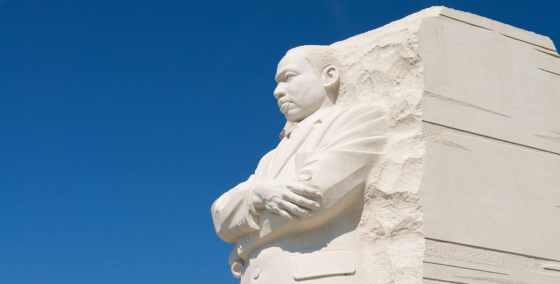
The Martin Luther King Jr. Memorial, located in Washington, DC’s West Potomac Park, is a powerful tribute to one of the most influential leaders in American history. Opened in August 2011, this 4-acre memorial is part of the National Park Service and stands as a testament to Dr. King’s work in advancing civil rights, equality, and justice for all. The memorial’s address, 1964 Independence Avenue, is symbolic of the year the Civil Rights Act became law — an essential milestone in the fight for racial equality.
At the heart of the memorial is the Stone of Hope, a striking 30-foot-tall sculpture of Dr. King. Visitors reach this monumental piece by passing through two large granite structures known as the Mountains of Despair. These symbolic elements are drawn from Dr. King’s famous “I Have a Dream” speech, where he declared, “Out of the mountain of despair, a stone of hope.” Surrounding the memorial is the Inscription Wall, featuring excerpts from 14 of Dr. King’s most memorable sermons, speeches, and writings. Visitors from around the world come here not only to honor Dr. King but also to reflect on how his words still resonate today.
 FDR Memorial
FDR Memorial

The FDR Memorial is located along the Western edge of the Tidal Basin, between the Lincoln and Jefferson Memorials. Built in 1997, the memorial is known for its unique design, its tribute to our 32nd President, Franklin Delano Roosevelt, and for the fact that it tells the story of America during the years of FDR’s Presidency. Four outdoor rooms portray the President’s terms in office, each with different statues and quotes. Beginning with a likeness of him riding in a car during his first inaugural speech and ending with him seated in a wheelchair, the memorial traces his twelve years of office as well as the many changes our country went through during that era.
-
 Restrooms
Restrooms
Lincoln Memorial – Transfer for Arlington National Cemetery Shuttle
Attractions to explore near this stop
Share with your friends!
Attractions to explore near this stop
Vietnam Veterans Memorial
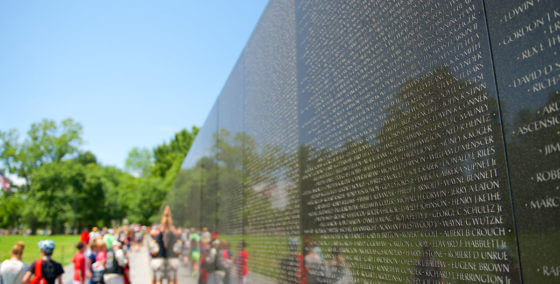
Often referred to as the wall that heals, the Vietnam Veterans Memorial beckons visitors of all ages, races and nationalities. It was created to honor and remember the men and women who served in the Vietnam War and to help our country heal after the controversial, emotional conflict ended. The enormous black wall lists 58,209 names of those who are missing or were killed during the war.
Korean War Memorial

To remember those who fought in the Korean War, The United States Congress approved a Korean War Memorial to be constructed in the National Mall. The memorial has several interesting aspects to it including the “Field Of Service” which has 19, larger-than-life-size stainless steel statues of servicemen from all four of the armed forces. The men appear to be a squad on patrol and are dressed in full combat gear.
World War II Memorial

Honoring the 16 million people who served in the United States Military during the war, the more than 400,000 who died and the countless others who supported our troops from home, the World War II Memorial is a stunning tribute to the sacrifices that were made.
Arlington National Cemetery
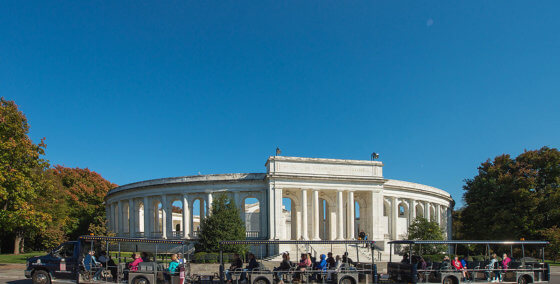
Explore the Rich History from the Comfort of our Tour Vehicles. Arlington National Cemetery is an enduring tribute to those who’ve dedicated their lives to defending the ideals of our nation. A visit here will leave an indelible impression on your spirit. There are more than 624 acres of hallowed ground and they’re best explored aboard Arlington National Cemetery Tours.
-
 Admissions
Admissions -
 Restrooms
Restrooms
 Lincoln Memorial – Transfer for Arlington National Cemetery Shuttle
Lincoln Memorial – Transfer for Arlington National Cemetery Shuttle
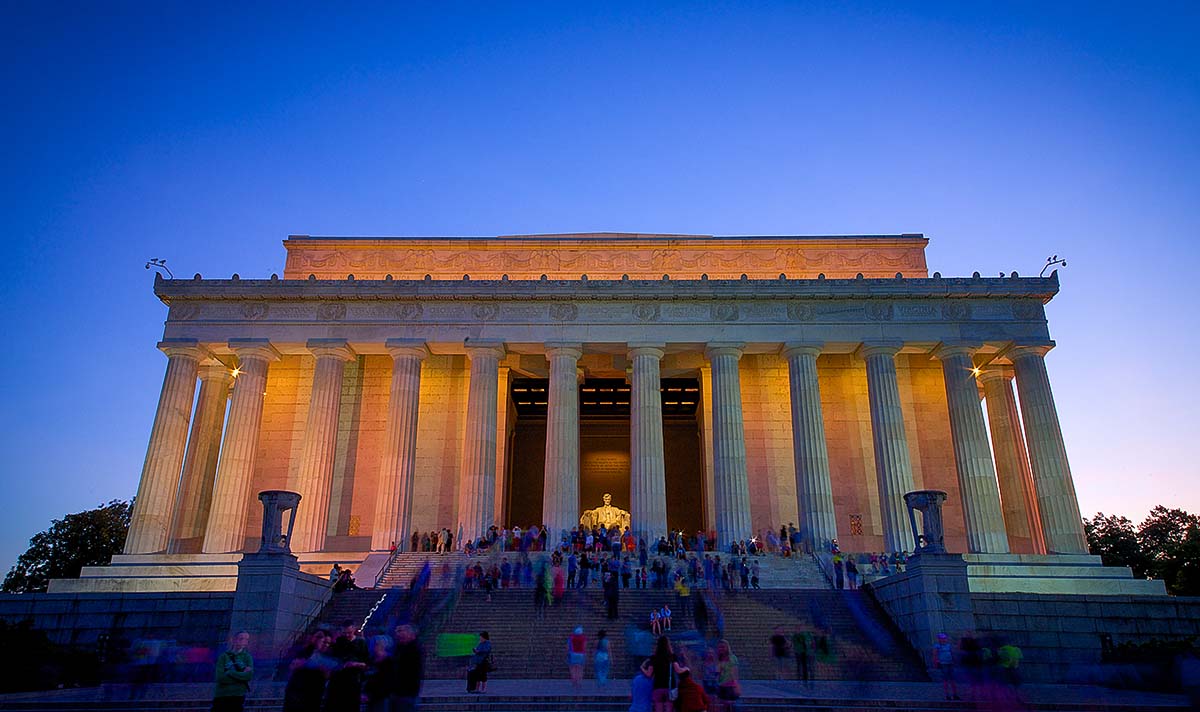
The Lincoln Memorial was opened on Memorial Day in 1922, 57 years after Abraham Lincoln, the 16th President of the United States, was assassinated. The immense Greek Temple stands in front of a gleaming reflecting pool and is a stunning spectacle during the day and especially at night.
This is also the trolley stop where you transfer to the shuttle that takes you to Arlington National Cemetery. The first Arlington shuttle departs the Lincoln Memorial at 9:30 am. The last shuttle from the Lincoln Memorial to Arlington National Cemetery is at 3:30 pm. The last shuttle from Arlington National Cemetery to the Lincoln Memorial is at 3:45 pm.
National Museum of American History
Attractions to explore near this stop
Share with your friends!
Attractions to explore near this stop
Smithsonian National Air and Space Museum
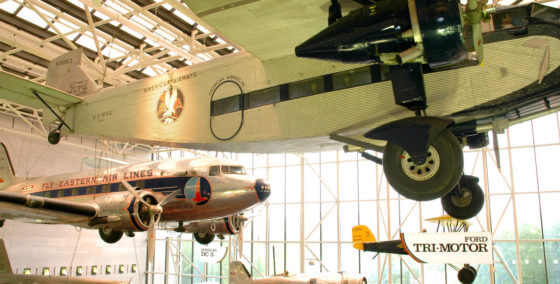
One can only imagine the exhilaration that Neil Armstrong felt as he took the very first steps on the moon in 1969 or the incredible thrill that the Wright brothers experienced as they took that first flight in 1903. At the Smithsonian Air and Space Museum, you can get an idea of how they felt when you see first-hand the original Wright 1903 Flyer and the Apollo 11 Command Module, which carried astronauts Neil Armstrong, Michael Collins, and Buzz Aldrin on their mission to the moon. These historic aircraft and spacecraft are part of the museum’s collection of more than 30,000 artifacts.
-
 Shopping
Shopping -
 Dining
Dining -
 Entertainment
Entertainment -
 Restrooms
Restrooms
Museum of African American History and Culture
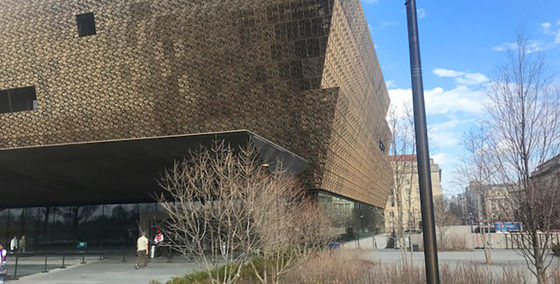
The National Museum of African American History and Culture chronicles America’s journey toward enshrining freedom, equality and democracy for all citizens. The museum houses a collection of more than 37,000 pieces related to a variety of areas, including slavery, segregation and civil rights as well as family, religion and the performing arts.
-
 Shopping
Shopping -
 Dining
Dining -
 Restrooms
Restrooms
Holocaust Memorial Museum

The museum serves as a memorial to the millions of people who were murdered during the Holocaust. Open 10 a.m. to 5:30 p.m. everyday, except Yom Kippur and Christmas Day. Timed passes are distributed on a first–come first–served basis.
-
 Shopping
Shopping -
 Dining
Dining -
 Restrooms
Restrooms
World War II Memorial

Honoring the 16 million people who served in the United States Military during the war, the more than 400,000 who died and the countless others who supported our troops from home, the World War II Memorial is a stunning tribute to the sacrifices that were made.
Washington Monument

One of the most celebrated and spectacular sights on the National Mall, the Washington Monument, stands as a grand tribute to our nation’s first President, George Washington. The 555 foot obelisk is also one of the oldest and most recognizable memorials in the City. While construction began in 1848, the monument was not completed until 1884 because of financial difficulties during the Civil War.
Smithsonian Museum of Natural History

From the mysteries of the Hope Diamond to the towering skeletons of prehistoric giants, the Smithsonian’s National Museum of Natural History brings the wonders of the world to life. Step inside and discover why millions of travelers visit each year to get an up-close look at nature’s most fascinating and beguiling specimens.
-
 Shopping
Shopping -
 Dining
Dining -
 Entertainment
Entertainment -
 Restrooms
Restrooms
 National Museum of American History
National Museum of American History
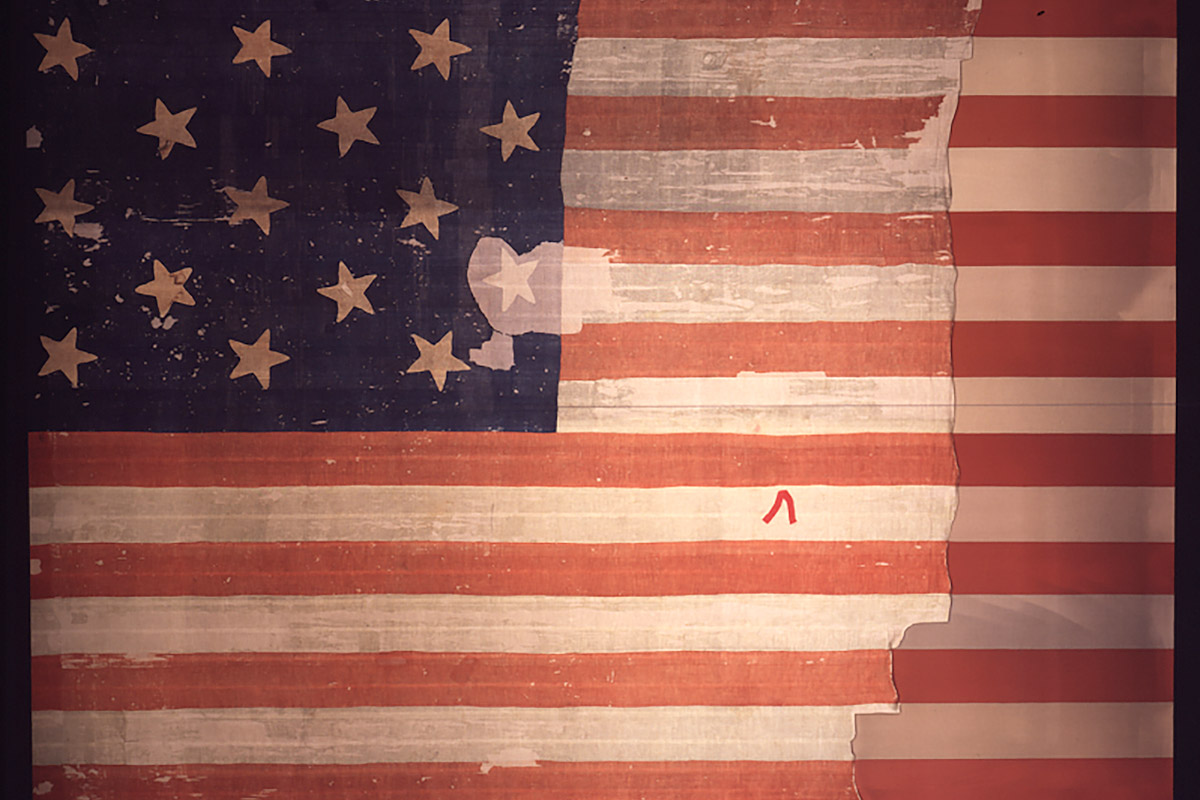
Step inside the National Museum of American History and experience the passion, creativity and inspiration of the American people. Walk through the fascinating exhibits and collections and transport yourself through hundreds of years of history, culture and the lives of our people. Over 3 million artifacts will amaze and enlighten you, including the original Star-Spangled Banner and Abraham Lincoln’s top hat.
-
 Shopping
Shopping -
 Dining
Dining -
 Entertainment
Entertainment -
 Restrooms
Restrooms
National Portrait Gallery
Attractions to explore near this stop
Share with your friends!
Attractions to explore near this stop
Complete Guide To Museum of African Art
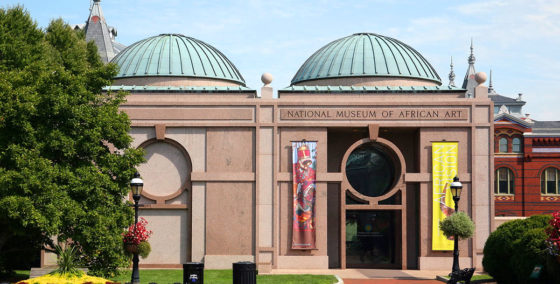
One of the country’s first institutions dedicated solely to artistic expression on the African continent, the National Museum of African Art opened to the public in 1987. The attraction boasts a collection of more than 9,000 pieces in a variety of media spanning from ancient times through the modern era. In addition to textiles and jewelry, the museum has sculptures, pottery and paintings representing nearly every country in Africa, including Arab North Africa and Sub-Saharan Africa. Although it is one of the Smithsonian’s smallest museums, the institution has the largest single collection of African art in the United States.
-
 Shopping
Shopping -
 Restrooms
Restrooms
 National Portrait Gallery
National Portrait Gallery

Meet America’s most remarkable citizens face-to-face at Smithsonian’s National Portrait Gallery. Stroll through the historic building, which was originally the U.S. Patent Office, and see paintings, photos, sculptures and more of famous Americans who have helped shape our nation. From the stunning exhibit of our Presidents, to photos of celebrities, scientists, entertainers, sports figures and more, the National Portrait Gallery offers a unique experience to guests of every age.
-
 Shopping
Shopping -
 Dining
Dining -
 Restrooms
Restrooms
Washington Welcome Center
Attractions to explore near this stop
Share with your friends!
Attractions to explore near this stop
Ford's Theatre
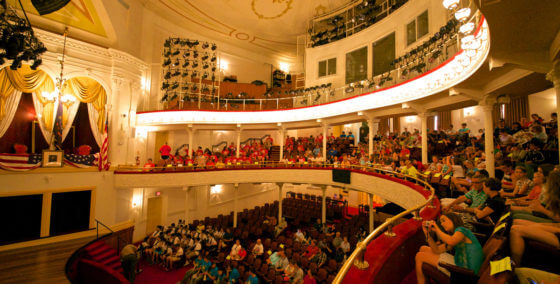
The chilling story of Abraham Lincoln’s assassination comes to life in the very place he was mortally shot on April 14, 1865. After being closed for 103 years, Ford’s Theater was restored and reopened in 1968. Serving as a tribute to Abraham Lincoln and his love of the performing arts, the Theater is a live, working theater that plays host to a variety of plays by some of the country’s most talented playwrights, actors and artists. Ford’s Theater is also home to The Lincoln Museum, which gives visitors a look at the elaborate conspiracy planned by actor John Wilkes Booth, a supporter of the Confederate States of America, to assassinate the President, the Vice President and the Secretary of State.
Petersen House
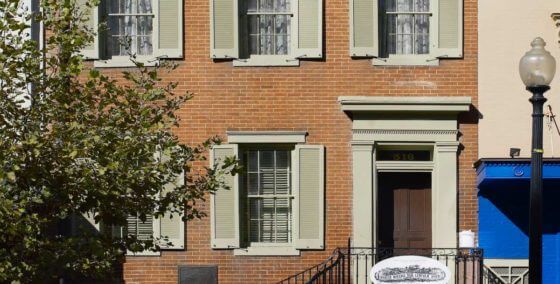
After a visit to Ford’s Theater, a stop at the Petersen House is most definitely in order. It is in this house that Abraham Lincoln died after frantic doctors worked to save him throughout the night. The house, now a National Historic Site, has been restored to its original condition and even the bed on which Lincoln passed away is much like the actual one. Now furnished with period pieces, guests can see the front parlor where Mary Todd Lincoln spent the night with her son, Robert and the back parlor where Secretary of War Edwin M. Stanton held a cabinet meeting and questioned witnesses. Visitors can take self-guided tours to see the solemn, yet intriguing Petersen House.
Madame Tussauds

When you visit Madame Tussauds, take a remarkable interactive journey through American history! You will be able to stand next to each of the US Presidents. From the shortest, President Madison to the tallest… President Lincoln and President L. B. Johnson.
-
 Admissions
Admissions -
 Restrooms
Restrooms
 Washington Welcome Center
Washington Welcome Center

For an official DC welcome, stop by the Washington Welcome Center. Here, you’ll find maps, brochures, tips and advice on all the area attractions and points of interest. Also, Welcome Center staff will give you great insight into activities and sightseeing spots you won’t want to miss. Souvenirs and snacks are also available and the center serves as the transfer stop for the Uptown Loop (Hotel Shuttle).
-
 Shopping
Shopping -
 Restrooms
Restrooms
The White House
Attractions to explore near this stop
Share with your friends!
Attractions to explore near this stop
White House Visitors Center
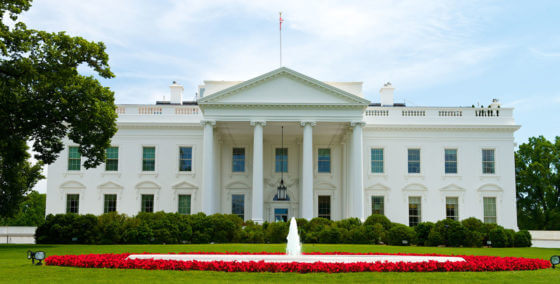
At the White House Visitor Center, people from around the world can learn about the amazing history of the White House and the United States Presidency. Discover facts about the architecture and furnishings of the White House, the first families, social events, and relations with the press and world leaders. Visitors can also watch a 30-minute video, entitled “Where History Lives” and see six historical exhibits. A gift shop offers a variety of souvenirs and mementos related to the White House and Washington DC. Park ranger talks, military concerts, and special traveling exhibits are also of interest to guests and available at different times.
-
 Shopping
Shopping -
 Restrooms
Restrooms
Department of Treasury

The Treasury Building took 33 years to build from 1836 – 1869. It was primarily designed by the same man, Robert Mills, who was the architect of the Washington Monument. At the time of its construction, the Treasury Building was one of the largest office buildings in the world. It served as a barracks during the Civil War and a temporary White House for President Andrew Johnson after President Lincoln’s assassination. Built in the Greek Revival style, Treasury was the first Departmental building in the nation’s capital thus influencing the design of many of the others.
-
 Restrooms
Restrooms
 The White House
The White House
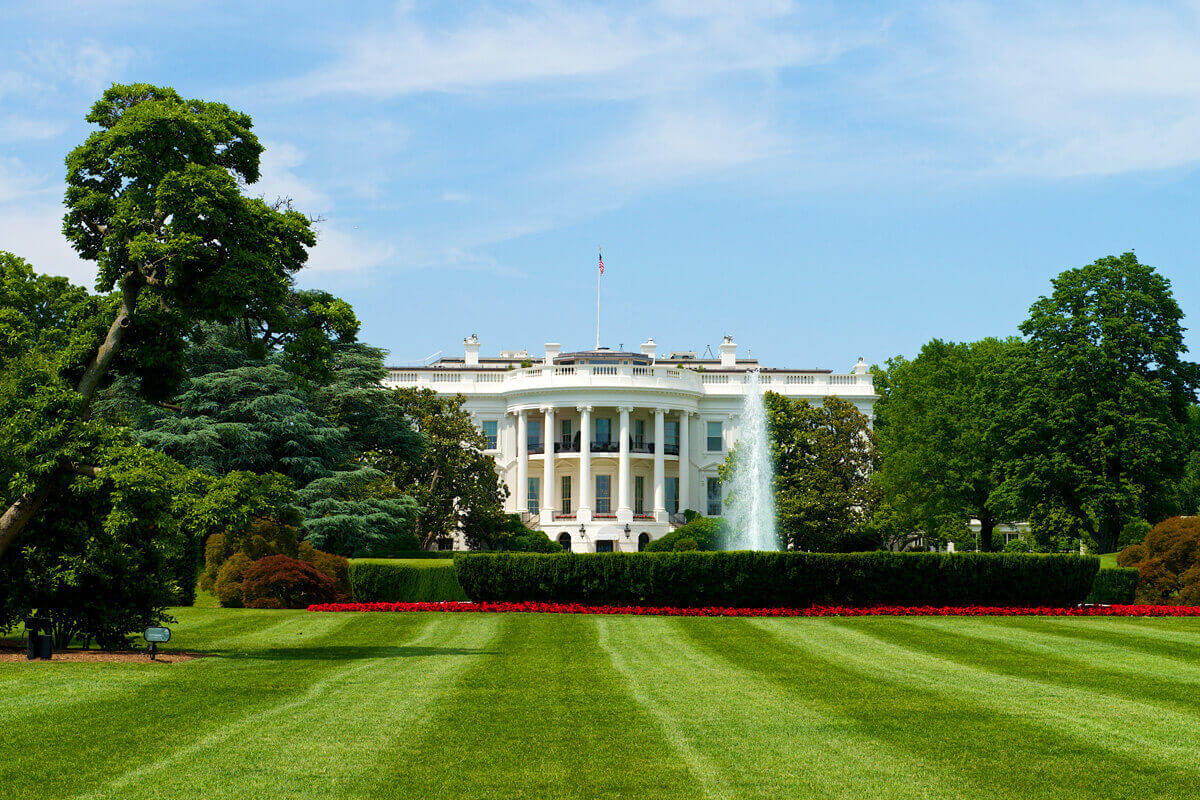
Since 1800, the White House has been a symbol of the United States government, the president and the people of America. It has also served as the home of every U.S. president except George Washington. Remodeled and restored many times over the years, the White House is recognized around the world as an emblem of American democracy. For many, the most famous room in the residence is the Oval Office where the president conducts business and meets with his advisers. As one of the most significant landmarks in Washington, D.C., the White House maintains a stately presence in the nation’s capital.
National Archives
Attractions to explore near this stop
Share with your friends!
Attractions to explore near this stop
National Gallery of Art
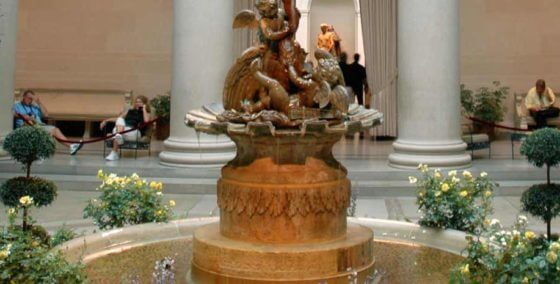
The National Gallery of Art DC was created in 1937. Through the generosity of Andrew W. Mellon, a financier who was also a public servant, the Museum gained its first collection. Mellon had a passion for art and his large collection of old master paintings, sculpture and other works were intended for all of America to enjoy. After his death, Congress accepted his collection and thus the National Gallery was born.
-
 Shopping
Shopping -
 Dining
Dining -
 Restrooms
Restrooms
U.S. Navy Memorial
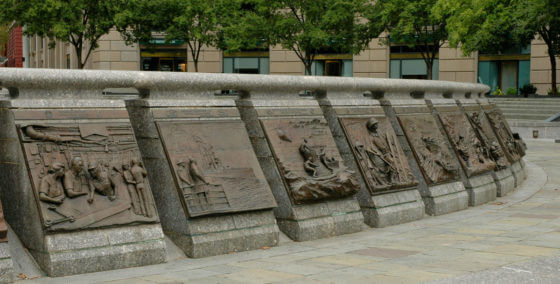
The US Navy Memorial is a truly spectacular tribute to those who served or are currently serving in the nation’s sea services. A stunning plaza paved in granite forms a 100-foot diameter of the world. Fountains, pools, flags and historic panels surround the deck of the plaza tracing the achievements of the Navy, Marines, Coast Guard and Merchant Marines. The famous Lone Sailor statue stands as a representation of the men who joined the service to fulfill their patriotic duty; a striking sight, it is perhaps one of the most well-known aspects of the memorial.
Old Post Office Pavilion & Bell Tower
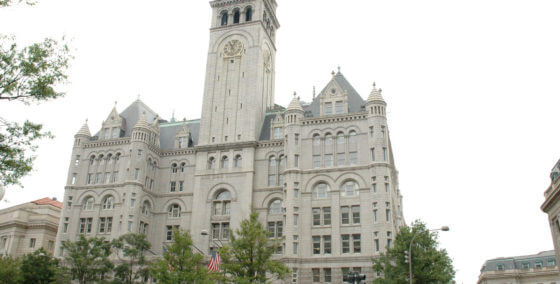
For a spectacular view of the city and a journey back to the early 1900’s, the Old Post Office and Bell Tower is a must see. It was Washington’s first skyscraper, measuring in at around 300 feet from the ground. In its day, it was the largest and tallest government building in the city and was used as the post office for several years before plans for a newer, more modern facility were implemented. Thanks to the Great Depression, the classic building was saved from destruction and today visitors can enjoy an exhilarating ride in a glass elevator all the way to the top.
-
 Shopping
Shopping -
 Dining
Dining -
 Entertainment
Entertainment -
 Restrooms
Restrooms
 National Archives
National Archives
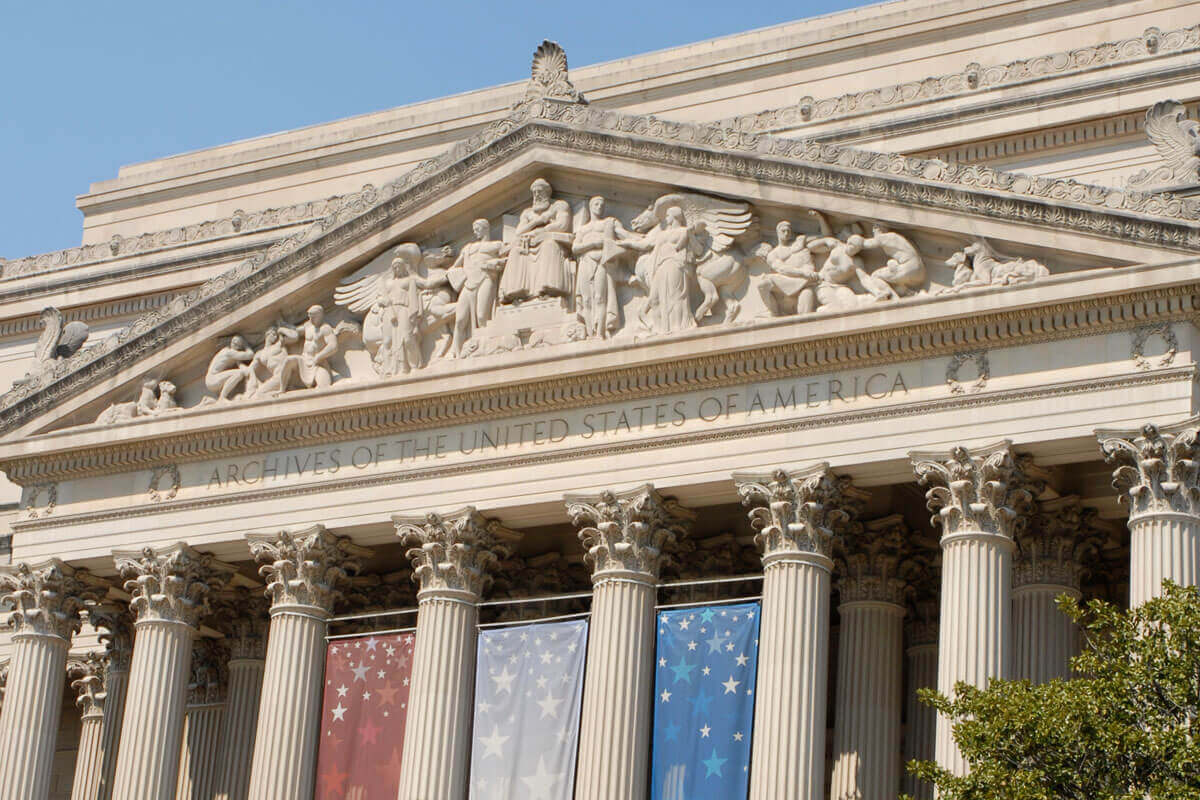
Journey back in time as you view the original founding documents of the United States written by the patriots who created a nation conceived in liberty. Established in 1934, the National Archives is the repository for the priceless documents that have shaped American history and defined our democracy. These include the Declaration of Independence, the U.S. Constitution and the Bill of Rights, which are collectively known as the Charters of Freedom. The Archives also contain other treasured heirlooms like an original copy of the Magna Carta from 1297, the Louisiana Purchase Treaty signed by Napoleon Bonaparte and Abraham Lincoln’s Emancipation Proclamation.
-
 Restrooms
Restrooms
Arlington National Cemetery
Attractions to explore near this stop
Share with your friends!
Attractions to explore near this stop
The Tomb of the Unknown Soldier

In 1921, Congress approved the burial of one unknown serviceman killed during World War I in the plaza of the newly built Memorial Amphitheater. To ensure that the choice was truly random amongst the options, four service members were exhumed from four separate cemeteries in France. Army Sergeant Edward Younger, a recipient of the Distinguished Service Cross, was selected to pick one of the four identical caskets. He placed a spray of white roses on the third casket from the left. While the chosen soldier was transported back from France on the USS Olympia, the others were reburied in the Meuse Argonne Cemetery.
 Arlington National Cemetery
Arlington National Cemetery
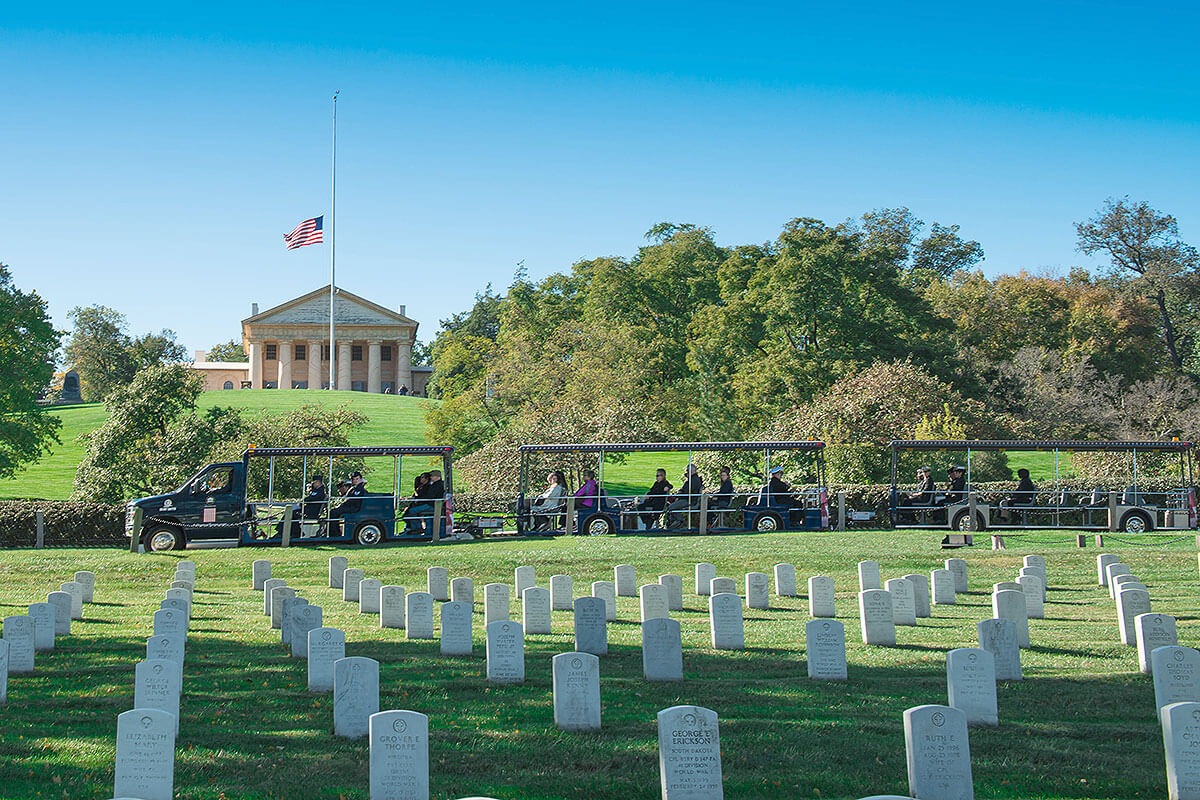
A lasting tribute to the men and women who made the ultimate sacrifice while serving our nation, Arlington National Cemetery is visited by millions of people each year. These hallowed grounds are where more than 400,000 service men and women and their family members are laid to rest. There are nearly 30 funerals held each day, honoring those who have given their life to defend the values and ideals of America. If you’re planning a vacation to Washington DC, a visit to Arlington is something you must do.
-
 Shopping
Shopping -
 Restrooms
Restrooms
President John F. Kennedy Gravesite
Attractions to explore near this stop
Share with your friends!
Attractions to explore near this stop
Section 5 Supreme Court Justices
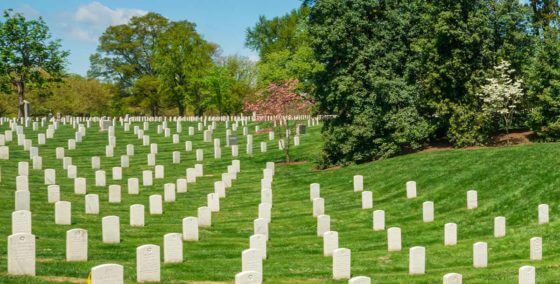
Section Five is often referred to as the Supreme Court Justice Section because there are approximately half a dozen US Supreme Court Justices buried here. Notables include Chief Justices William H. Rehnquist and Warren Burger and Associate Justices Oliver Wendall Holmes, Potter Stewart, and Thurgood Marshall. Marshall was the first African American to serve on the Court. Prior to becoming a Justice, he argued before the Court most notably during the Brown V. Board of Education case.
 President John F. Kennedy Gravesite
President John F. Kennedy Gravesite
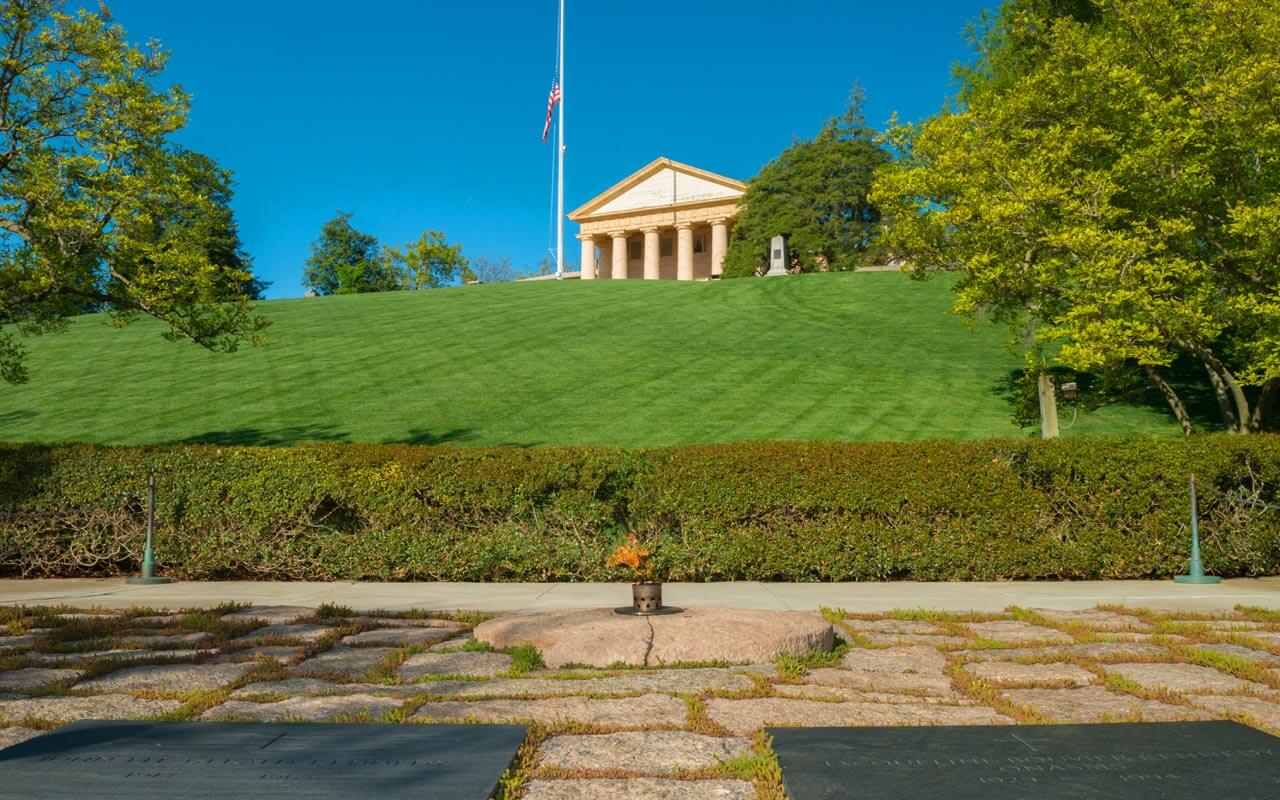
The original Kennedy gravesite was very small, only 20 feet by 30 feet, and surrounded by a white picket fence. The minute plot was not enough to withstand the incredible amount of mourners visiting the President’s grave. A decision was made to create a more permanent and sturdy site which is what you will see today. The circular granite walkway is 210 feet in diameter and 3.2 acres are set aside in President Kennedy’s memory. The low-lying wall is inscribed with quotes from Kennedy’s inaugural address and just behind the wall is the grave of the President, two of his children, his wife Jacqueline Kennedy Onassis, and the Eternal Flame. Today President Kennedy’s grave is the most visited site at the cemetery.
US Coast Guard Memorial
Attractions to explore near this stop
Share with your friends!
Attractions to explore near this stop
Robert Peary and Matthew Henson
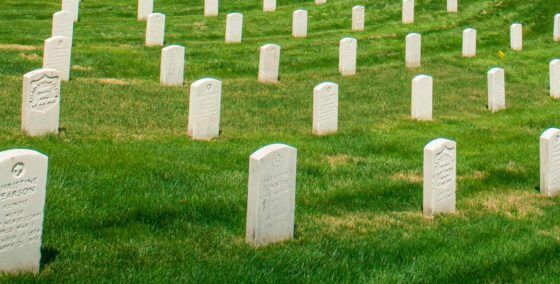
Rear Admiral Peary is credited with being the first to reach the North Pole. He directed a six man team which included Matthew Henson. Henson was an African American explorer and a close companion of Admiral Peary. It was Henson who planted the U.S. flag on the North Pole.
 US Coast Guard Memorial
US Coast Guard Memorial

Dedicated in May of 1923, the marker memorializes the 150 sailors who lost their lives on the cutter ships Tampa and Seneca which sank within a week of each other during World War I. Today the memorial is for all Coast Guard service members. Adorned with a seagull which represents the tireless vigil of the guard and the words Semper Paratus meaning “Always Ready”, the motto of the Coast Guard, the memorial is a must see for all.
John J. Pershing
Attractions to explore near this stop
Share with your friends!
Attractions to explore near this stop
Section 34

Pershing is not the only notable you should visit at this stop. Other notables include Corporal Ira Hayes who was one of the six men to raise the flag on top of Mt. Suribachi at Iwo Jima, General Henry “Hap” Arnold who was the only person to receive a five star rank in two branches of the service, the Army and Air Force, and Corporal Frank W. Buckles who was the oldest surviving World War I veteran. He died in 2011 at the age of 110.
Section 3

Section three is near the Pershing gravesite stop. A short walk down the street will take you to the graves of astronauts Roger Chaffe and Virgil Grissom who perished aboard the Apollo I spacecraft and medical figures Jonathon Letterman, the Surgeon General of the Army of the Potomac during the Civil War, and Major Walter Reed who confirmed that mosquitoes were the cause of yellow fever.
 John J. Pershing
John J. Pershing

Pershing is the highest ranked military officer buried at Arlington and the second highest ranked officer in history. He was promoted to General of the Armies in 1919, which is equivalent to a six star General, and was put in charge of all branches of the military service. He led the American Expeditionary Forces during World War I and was mentor to many generals including Patton, Eisenhower, Marshall, and Bradley. The only other person to obtain this rank was General George Washington who earned the rank posthumously in 1976.
The Tomb of the Unknown Soldier
Attractions to explore near this stop
Share with your friends!
Attractions to explore near this stop
The Tomb of the Unknown Soldier

In 1921, Congress approved the burial of one unknown serviceman killed during World War I in the plaza of the newly built Memorial Amphitheater. To ensure that the choice was truly random amongst the options, four service members were exhumed from four separate cemeteries in France. Army Sergeant Edward Younger, a recipient of the Distinguished Service Cross, was selected to pick one of the four identical caskets. He placed a spray of white roses on the third casket from the left. While the chosen soldier was transported back from France on the USS Olympia, the others were reburied in the Meuse Argonne Cemetery.
Challenger and Columbia Memorials
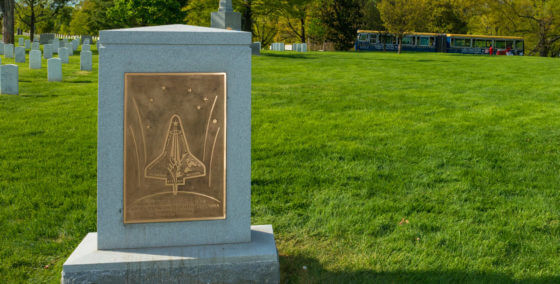
Just across the street from the Memorial Amphitheater are the memorials for the Space Shuttle Challenger and the Space Shuttle Columbia. The Challenger exploded on January 28, 1986 just a few seconds after takeoff. All seven crew members, including civilian teacher Christa McAuliffe, perished. The Columbia disintegrated during re-entry on February 1, 2003 killing all seven crew members.
Audie Murphy
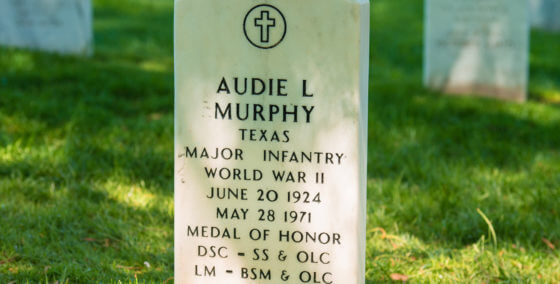
He became one of the most highly decorated soldiers from World War II after being turned down by the Marine Corp for being too short and then turned down by the paratroopers. He received 28 medals, three from France and one from Belgium, all before he turned 21. His military record and good looks landed him in Hollywood. He acted in over 40 films including “To Hell and Back”, which was autobiographical. He died in a plane crash at the age of 46.
USS Maine Memorial

This is the actual mast from the USS Maine, which exploded off the Havana Harbor in 1898. Although the cause of the explosion was unknown, the press in the U.S. blamed the Spanish. The rally cry became “Remember the Maine.” Thus, the United States entered the Spanish- American War. Surrounding the memorial are the remains of many of the men who lost their lives on the ship.
 The Tomb of the Unknown Soldier
The Tomb of the Unknown Soldier
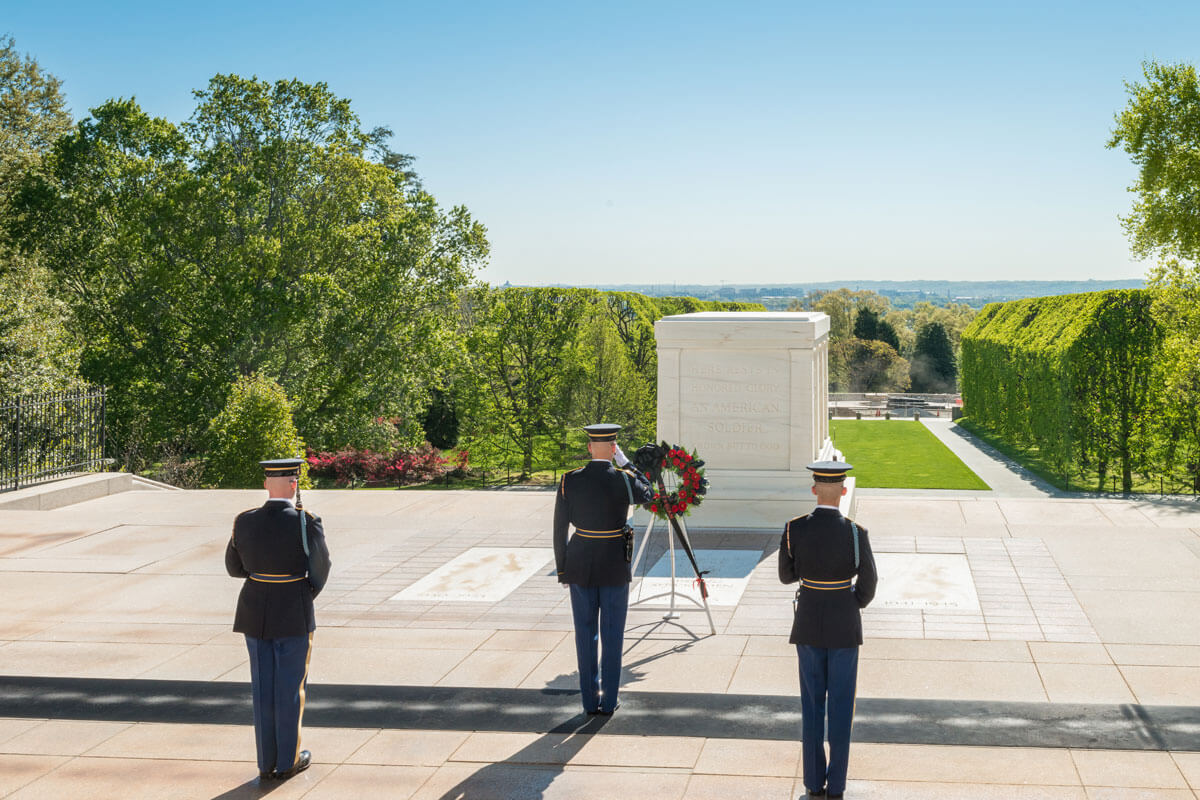
In 1921, Congress approved the burial of one unknown serviceman killed during World War I in the plaza of the newly built Memorial Amphitheater. To ensure that the choice was truly random amongst the options, four service members were exhumed from four separate cemeteries in France. Army Sergeant Edward Younger, a recipient of the Distinguished Service Cross, was selected to pick one of the four identical caskets. He placed a spray of white roses on the third casket from the left. While the chosen soldier was transported back from France on the USS Olympia, the others were reburied in the Meuse Argonne Cemetery.
Arlington House
Attractions to explore near this stop
Share with your friends!
Attractions to explore near this stop
Section One

Right across the street from Arlington House is Section One. It holds the remains of many officers from the Civil War. The headstones are for the most part extremely large and elaborate. One such marker is the white sarcophagus for Montgomery Meigs, the man responsible for turning the Custis Lee plantation into a cemetery. Other notables include Abner Doubleday, a civil war general often falsely credited with being the inventor of baseball, and Anita Newcomb McGee, the first female Army surgeon and founder of the Army Nurse Corps. You can also find the reinterred remains of service members from the American Revolution and the War of 1812.
James Tanner Amphitheater

The first and original amphitheater on the Arlington grounds was built in 1873 for the fifth Decoration Day (known today as Memorial Day). The celebration quickly outgrew the amphitheater and that’s why the new Memorial Amphitheater was built. The name was changed to the James Tanner Amphitheater in May of 2014 as part of the 150th anniversary of the cemetery. Tanner was a Civil War veteran and served as President Lincoln’s stenographer. He is buried in Section Two very close to the amphitheater.
Tomb of the Civil War Unknown

The Tomb of the Civil War Unknown is located near the Arlington House. It holds the remains of 2,111 unknown soldiers from the Battle of Bull Run. The monument was erected by order of General Montgomery C. Meigs with the intent of deterring the Lees from returning to the Arlington grounds.
 Arlington House
Arlington House
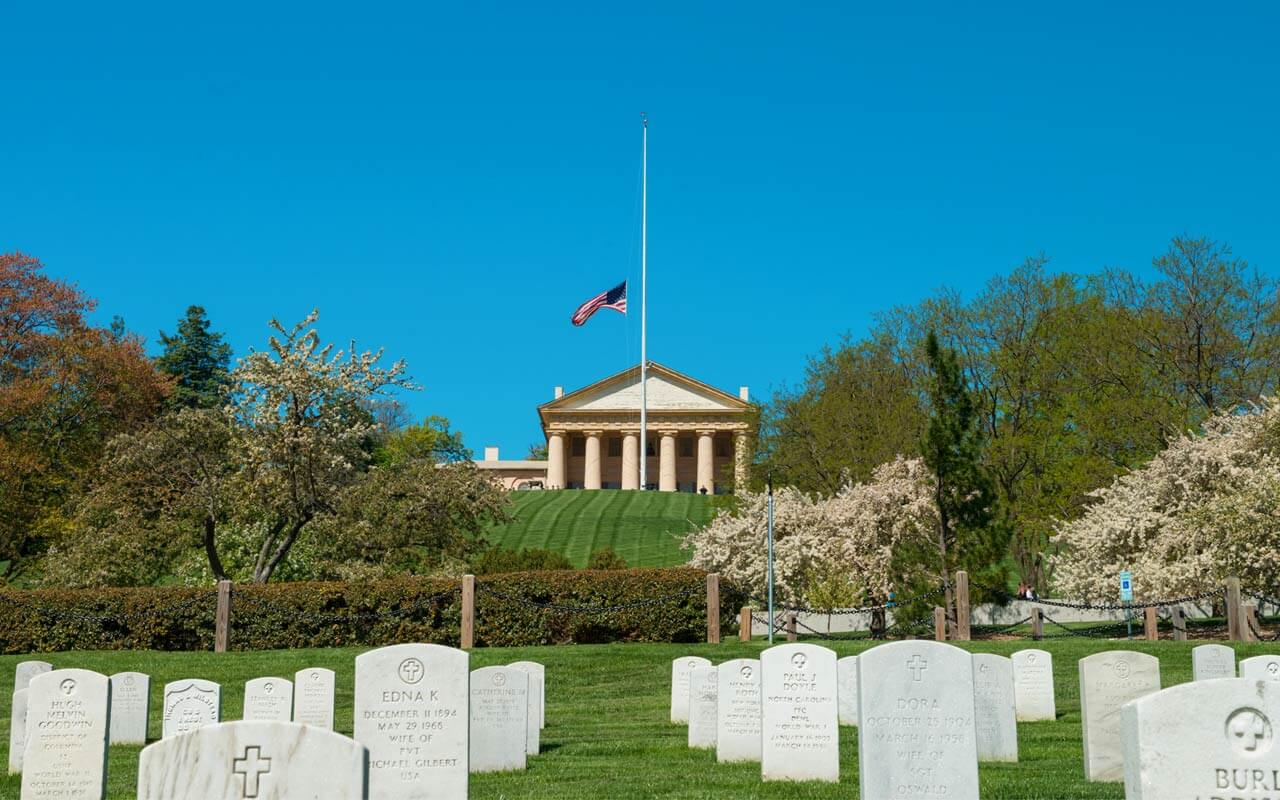
Arlington House was built by George Washington Parke Custis as a memorial to his adopted grandfather, George Washington. The house is full of history. It is more commonly known as the Robert E. Lee Memorial because Lee lived there for approximately 30 years. Lee married Parke Custis’ daughter Mary. They lived on the grounds until the start of the Civil War in 1861. During the war, the house, which was located on strategic high ground, became a campsite for Union troops. Arlington House sits on a hill overlooking the Potomac River and the District. You do not want to miss this panoramic view of our nation’s capital. Other things of interest on the grounds include a museum about the Lees, a book shop, and a former slave quarter.
US Marine Corps War Memorial Iwo Jima
Attractions to explore near this stop
Share with your friends!
Attractions to explore near this stop
Netherlands Carillon

The bell tower, located just outside the Ord and Weitzel gate, is a gift from the Netherlands to the U.S. for liberating them from the Nazis during World War II. The tower contains 50 bells which weigh approximately 30 tons. The bells play a medley of the armed forces anthems at noon and 6 PM and they chime every 15 minutes.
Arlington Section 27

The oldest section at Arlington contains the remains of nearly 4,000 former slaves; their headstones are marked by the words “citizen” and “civilian.” This section also holds the remains of approximately 1,500 United States Colored Troops (USCT), which the official designation was given to all African American units serving in the U.S. Army during the Civil War. Additionally, this section is the resting place for Private William Henry Christman. Interred on May 13th 1864, Christman was the first military burial on the Arlington grounds.
 US Marine Corps War Memorial Iwo Jima
US Marine Corps War Memorial Iwo Jima

Just outside the gates of the cemetery is the United States Marine Corps War Memorial which is for all Marines who have given their lives in service since 1775, but it is often called the Iwo Jima Memorial because it depicts the famous flag raising on top of Mt. Surabachi. The memorial was dedicated November 10, 1954, the 179th birthday of the Corps. It is one of the world’s largest bronze statues and it’s quiet breathtaking to see in person.
SELECT YOUR lOCATION
-
1Union StationSTOP
-
2National Japanese American MemorialSTOP
-
3U.S. CapitolSTOP
-
4Smithsonian Air and Space MuseumSTOP
-
5The Wharf - Boarding for Water Taxi Boat CruiseSTOP
-
6International Spy MuseumSTOP
-
7Washington MonumentSTOP
-
8Jefferson MemorialSTOP
-
9FDR Memorial/ MLK Jr. MemorialSTOP
-
10Lincoln MemorialSTOP
-
11National Museum of American HistorySTOP
-
12National Portrait Gallery/African Art MuseumSTOP
-
13Washington Welcome CenterSTOP
-
14The White HouseSTOP
-
15National ArchivesSTOP
WELCOME TO BOSTON

Union Station

National Japanese American Memorial

U.S. Capitol

Smithsonian National Air and Space Museum

The Wharf – Boarding for Water Taxi Boat Cruise

International Spy Museum

Washington Monument

A Visitor’s Guide to the Jefferson Memorial

FDR Memorial

Lincoln Memorial – Transfer for Arlington National Cemetery Shuttle

National Museum of American History

National Portrait Gallery

Washington Welcome Center

The White House

National Archives

Arlington National Cemetery

President John F. Kennedy Gravesite

US Coast Guard Memorial

John J. Pershing

The Tomb of the Unknown Soldier

Arlington House





